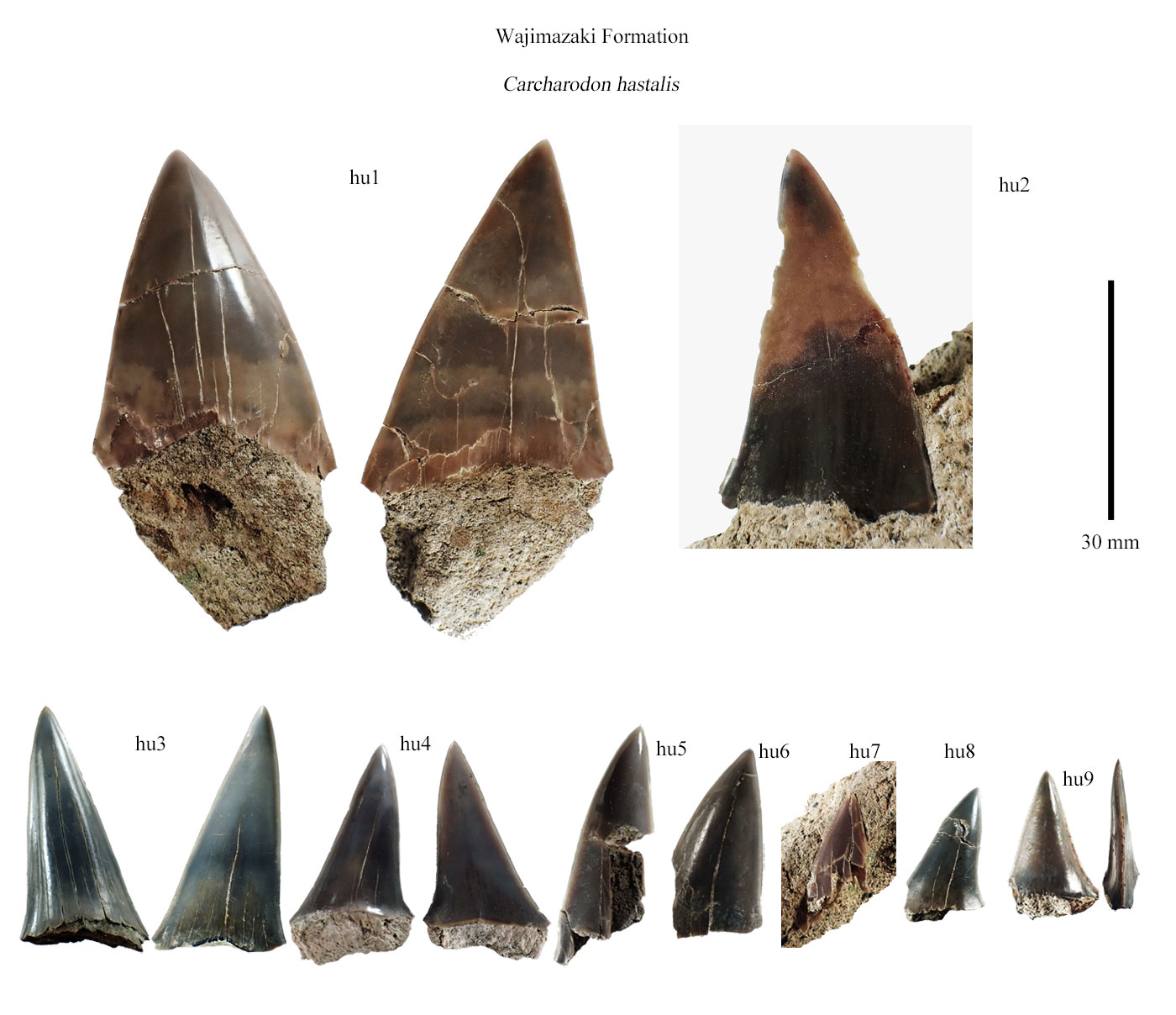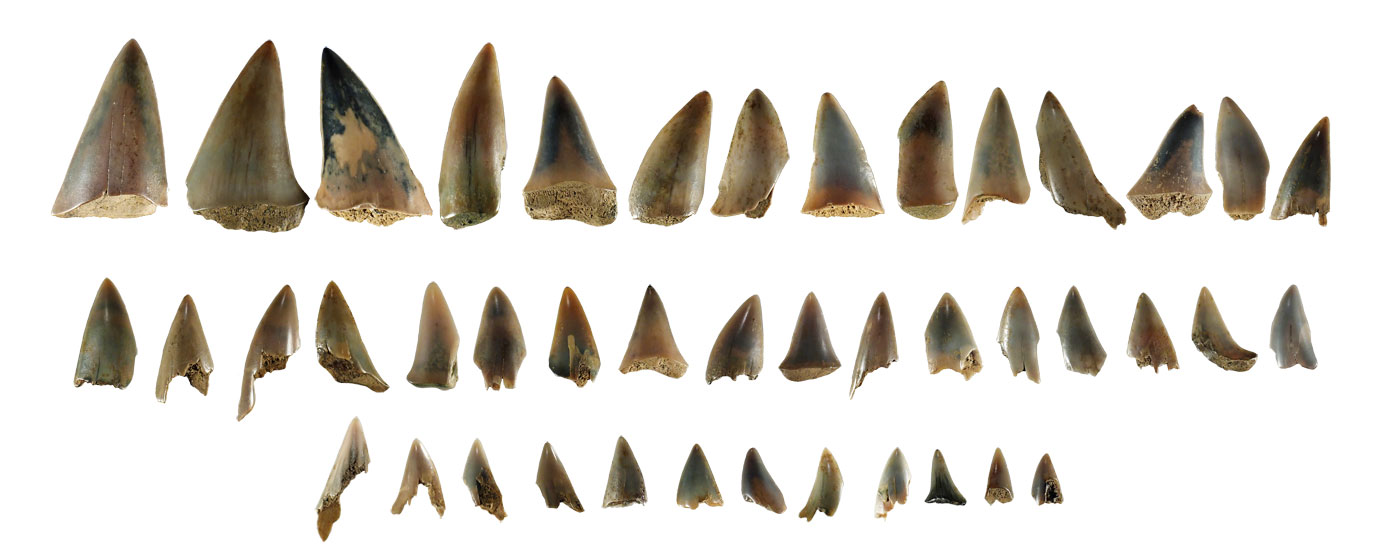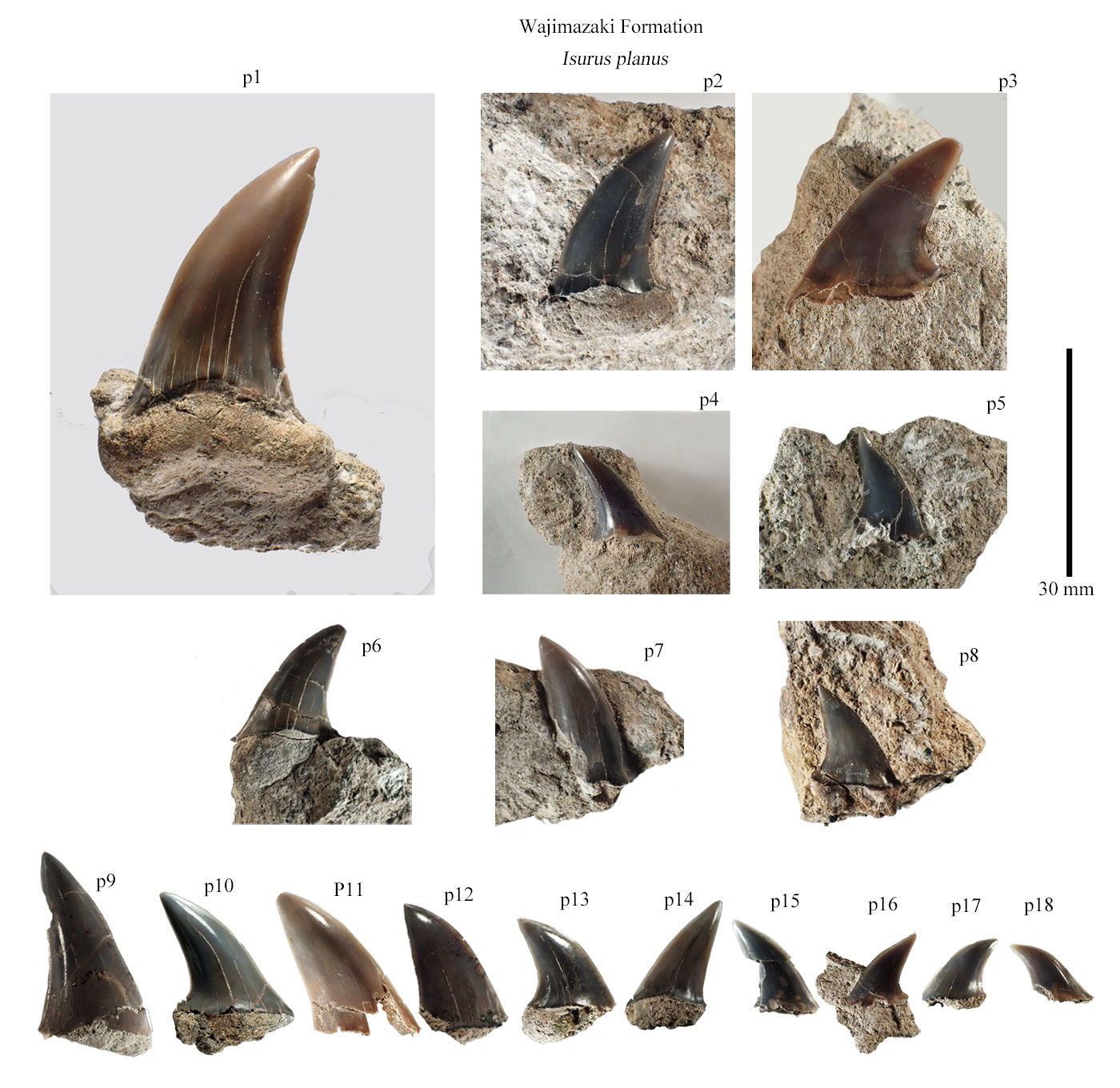| We previously attempted to reconstruct the dentition of I. planus using fossil teeth of I. planus obtained from the Sekinohana Formation. The estimated dentition is shown in Ref. 1. This time, the dentition of I. planus was considered again using the fossi teeth of I. planus obtained in the Wajimazaki Formation. The recovery rate of C. hastalis obtained with I. planust from the Amatsu Formation, the Late Miocene was used as a reference for the evaluation. It is assumed that the preservation of fossil teeth in the Amatsu and Wajimazaki Formations is almost the same. As a result, the I. planus dentition inferred from the I. planus tooth fossils obtained from the Wajimazaki Formation was found to be the same as that inferred from the Sekinohana Formation. |
| The fossil teeth of C. hastalis from the wajimazaki F. consisted of 9 upper teeth and 5 lower teeth. . The recovery rate (ratio of lower teeth to upper teeth) is 56%. This figure is similar to that of C. hastalis obtained from the Amatsu F. in the Late Miocene. |
| Plate 1. The fossil upper teeth of C. hastalis |

| Plate 2. The fossil lower teeth of C. hastalis |

| Plate 3. The number of fossil teeth from the wajimazaki F. was 18, which are considered to be I. planus. |

| None of the tooth fossils from this locality were of unknown genus or species. There were also no tooth fossils that might be related to I. planus. These results confirm once again that the dentition of I. planus is as previously shown in Sekinohana F. (Ref. 1. below). We believe at this stage that I. planus is a species derived from I. oxyrynchus and is probably not a sister species of I. oxyrynchus. |
| Ref. 1. Estimation of the dentition of "Isurus" planus with reference to the dentition of Isurus oxyrinchus. (ver. 1. Jun. 08, 2023) |

| Ref. 2. Isurus oxyrinchus Rafinesque, 1809: |

| ver.1. Jul. 05,2025 |
.Wajimazaki. Isurus planus
I. Sekinohana F. . II. C. hastalis (Recovery Rate). . III. Wajimazaki F. . IV. Akaura F.
Back & Forth